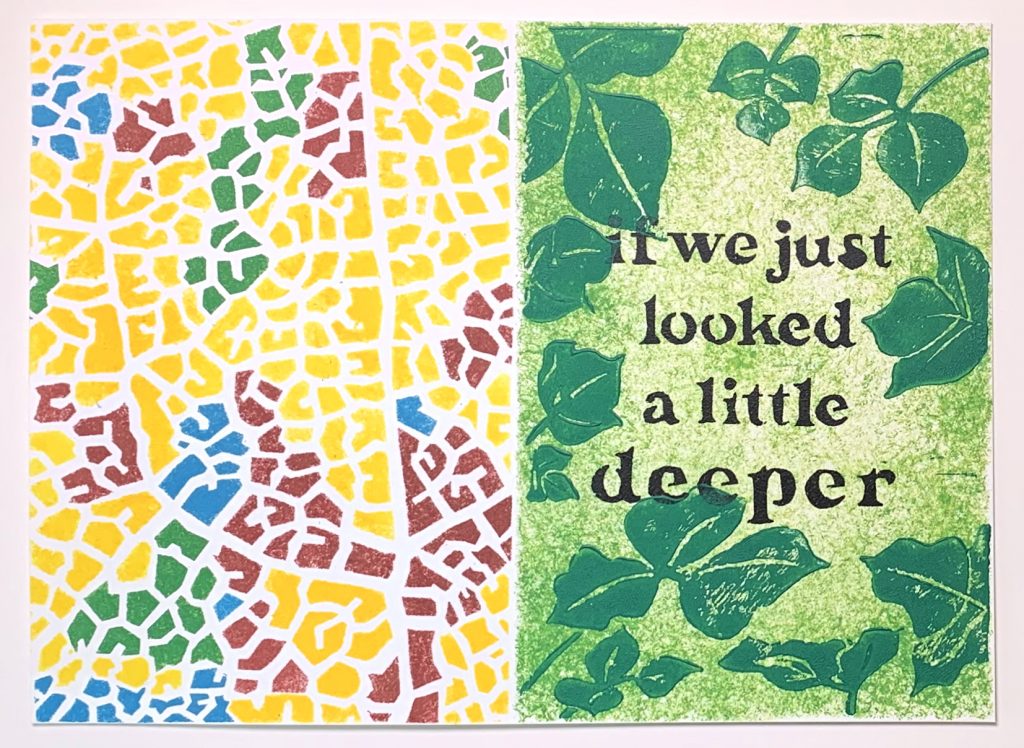
“The Line That Ate The South”
7 layer pochoir and rubber stamp print
4 in x 8 in, 2020
Many people associate the American South with kudzu, an invasive vine that was introduced in the 1930s when congress incentivized farmers to plant it as a way to combat soil erosion. Today, kudzu’s growth tends to be over exaggerated, and many believe that it covers much more land and spreads much faster than it actually does. Kudzu has begun to contribute to the idea that the south is a “lost cause,” even though it is one of the world’s biodiversity hotspots.
Similarly, many tend to write off the South because of its racism. Even though the U.S. as a whole was built by and for racists, the general assumption is that racism only still thrives today in the South. In reality, racism runs deep in all American systems, and systemic oppression is not limited to regions or states. One example of racist policy that has affected Americans nationwide is redlining, which happened around the same time kudzu was being planted. When nonwhite communities were marked by the government as credit risks, any likelihood of economic investment in those communities was lost. Today, communities that were redlined suffer from higher temperatures than those marked as desirable. The lack of trees and parks and the abundance of heat-trapping pavement leave these communities suffering from a policy that was banned over 50 years ago.
The imagery in this print is sourced from redlining maps of North Carolina cities as well as a photograph of a kudzu leaf under a microscope. The text is sourced from this Bill Finch article.